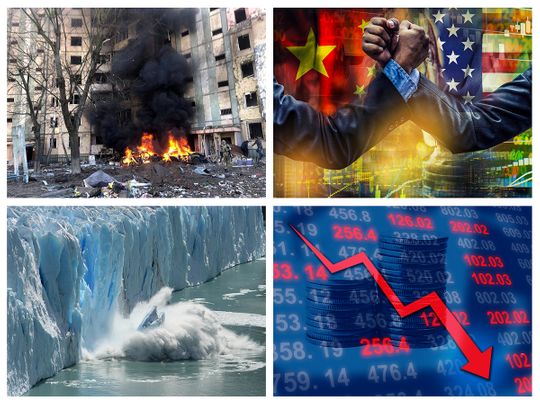
The year 2022 is in its last lap, and the world is getting ready to welcome 2023.
There were many hopes the pandemic-devastated world had from 2022. But the year turned out to be very disappointing with the brutal war in Europe and terrible humanitarian crises in many parts of the world.
Unfortunately, there is still no light one can see at the end of a very long, dark tunnel.
Violent conflicts, a divided world, climate crises, and economic hardship will likely make more people despair in the coming year. As the International Rescue Committee estimates, 340 million people are expected to need humanitarian assistance in 2023.
Many predict the risks of increasing violence and the escalation of conflicts in the coming weeks and months in North Korea, Mali, Afghanistan, Yemen, Iran, Myanmar, Congo, Honduras, Syria, Ethiopia, Somalia, Sudan, Venezuela, and Nigeria. The list of conflicts in the coming year is very long.
Besides these conflict hotspots, whose impacts are likely to be local or regional, the world is expected to continue to pass through four major crises in 2023, with severe and complex implications for global peace, security, and stability.
It is easy to see that the world is not moving toward peace. These four crises, the War in Ukraine, China-US bipolarity, climate emergency, and global recession, may have a spillover effect.
Ripple effect of war in Ukraine
Ten months have passed, but there is no end in sight for the fighting to end in Ukraine. Though the number of deaths in this war is not as high as in other wars in the Middle East or Africa, the war has caused catastrophic damage to civilian infrastructure, forcing millions of people to leave the country.
The war in Ukraine has brought serious energy and economic crisis for most of Europe. Outside Europe, the war has greatly impacted the global markets and food supply.
The ripple effects of Russia’s war in Ukraine have extended human suffering far beyond European borders, and as it looks now, there is no peace process in place to bring an early end to the war.
The cost-of-living crisis brought by the war has destabilised the political establishment in many countries and will intensify in 2023. The direct and open confrontation between the US and Russia will be felt at the UN Security Council.
China-US rivalry may intensify
China’s rapid and consistent growth and the decline of the US-led global consensus have led to the re-emergence of a bipolar world. In the last four decades, while the GDP of the US increased less than four times, the GDP of China has increased more than 40 times.
China’s increasing financial strength and growing political muscle have resulted in its competition with the US for powerful allies in different parts of the world. There is no doubt that two distinct global blocs are increasingly emerging, and the competition between them will be fierce in 2023.
In the coming year, China is less likely to be engaged in a full-scale war. The diplomatic and economic competition between two global superpowers will intensify in 2023, and that will either activate or intensify several proxy conflicts in different parts of the world and reduce the multilateral institutions to be completely ineffective in peacemaking and peacebuilding activities.
Approaching climate emergency
The planet is warming up dangerously while greenhouse gas emission is not showing any sign of slowing down. The international negotiations to meet the challenges of climate change, instead of bringing the world together, have divided it further on many levels.
Global warming has already resulted in weather extremes, resulting in humanitarian crises, food and water insecurity, and forcing large population displacement. Climate change has already seriously threatened peace and security at various levels.
Climate disasters will be worse in 2023 as the world fails to find ways to mitigate and adapt to this serious challenge, leading to more political instability and creating more conflicts.
A global recession imminent?
The world was going through an economic downturn even before the Covid-19 pandemic. The War in Ukraine took away the possibility of economic recovery this year.
The global economic crisis has already resulted in more humanitarian crises and political instability in several countries. Rapidly rising prices and slower economic growth aggravate the situation further.
Many countries have raised their interest rates to arrest inflation, leading to the fear that a global recession may be a possibility in 2023. As the present global economic trend suggests, in 2023, the world will likely witness further economic pain, financial turmoil and workers protests.
The world will likely struggle through these four crises in the coming year — security, political, climate, and economic in character.
None of them are new or exclusive, but the conditions are ripe for their startling acceleration in 2023, and the reinforcing impact is likely to lead to many more political and humanitarian crises in many parts of the world.











